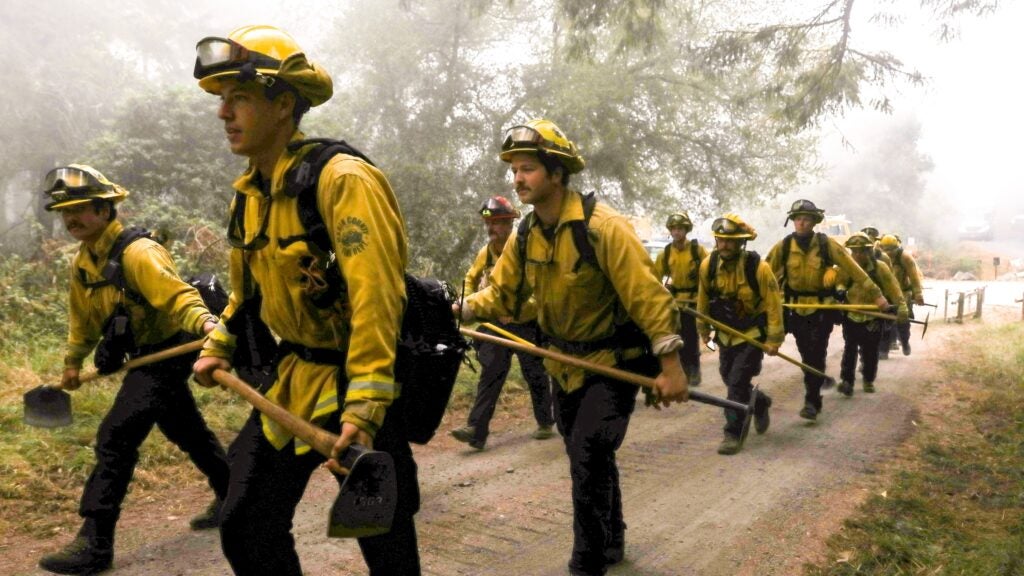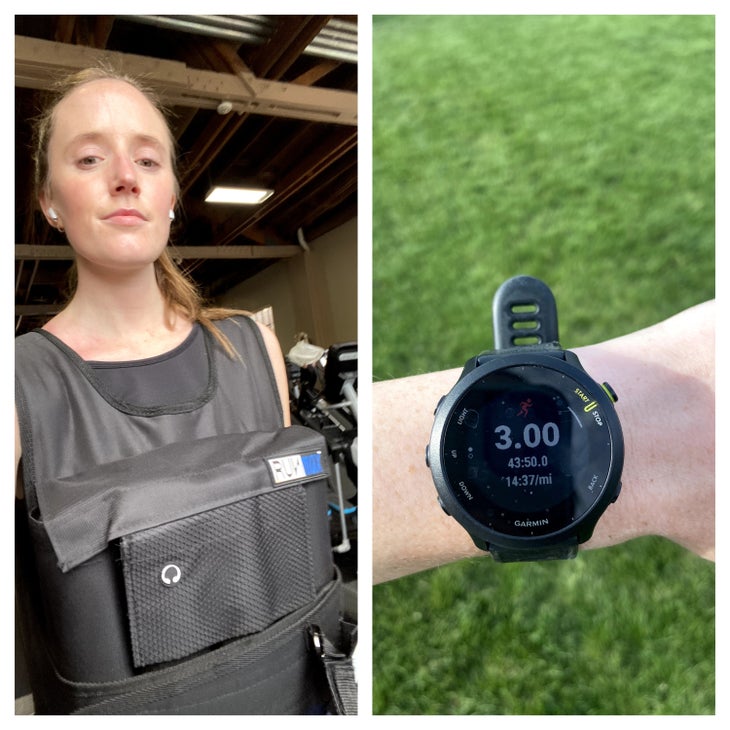Fitness
Are You Fit Enough to Be a Wildland Firefighter?

I haven’t taken a physical fitness test since…middle school? I thought as I pulled up to a Montana Department of Natural Resources compound in Missoula in May. Every spring, more than 25,000 new and returning wildland firefighters with various land management agencies undergo a test to certify their fitness for the job. The “arduous pack test” is a pre-season ritual: Don 45 pound weight vests or backpacks, speed walk three miles in under 45 minutes and ignore your screaming shin splints. This year, I was joining the crew.
According to the Forest Service, the energy cost of the pack test is similar to fireline work; your performance is a good barometer for the muscular and aerobic fitness you need to fight fire without getting hurt. I needed to pass to join a prescribed burn (a controlled fire ignited to reduce wildfire risk or regenerate landscapes) later in the year, somewhere in the Pacific Northwest. Joining burns like this as a civilian who doesn’t work for a conservation nonprofit or firefighting crew is a rare opportunity. As a journalist covering wildfire, I jumped at the chance to do so through the University of Idaho’s Artists-In-Fire residency program.
Elite firefighting crews like smokejumpers and hotshots undergo more specific tests for physical fitness. They’ll do the regular pack test, run 1.5 miles in under 11 minutes, do seven pull-ups in a minute, 25 pushups in a minute, and an 85 pound pack test, all in a row. I was glad to only attempt the first component.
While uncommon, people have died during the test. According to agency reports, at least 17 fire personnel died while preparing for or taking the pack test between 1990 and 2019, usually from a heart attack. I was pretty sure the test wouldn’t kill me, but I was intimidated enough by the objective to take it seriously. So this March, I started training for my early May test.
My boyfriend, a former hotshot, shuffled around our living room at a comically rapid clip to demonstrate the test, describing the pace as “awkward.” As soon as I hopped on a treadmill, I saw why. At four miles per hour or faster, your body either wants to start jogging or slow down. I could do neither, since the rules of the test do not allow you to run. I took to scrolling through X and Reddit each evening for advice, which included swinging my arms more and chilling out. People much smaller than me—sometimes under five feet tall—also looked for help online and expressed their nerves. “How do short people do this?” one asked.
Literature distributed by the agency suggests giving yourself at least a month to train, and to first get comfortable with distance before adding weight. You’re encouraged to hike hills to build leg strength and endurance, jog to build aerobic fitness, and cross-train with mountain biking and weights. Catherine McRae, a national press officer for the Forest Service, told me to limit my physical strain during the test, and to try and keep my heart rate below 100 beats per minute. “Think of it as staying in first gear while doing the pack test and still having your higher gears available and ready for the functions you will perform on the fireline,” she said.
I’m an active 30-year old—I trail run, mountain bike, and hike—but I’ve also got a desk job and a pesky bout of peroneal tendonitis (painful inflammation on the outside of my foot) from overuse. Although I’m no stranger to schlepping heavy loads up and down mountain passes for fun, my approach to backpacking is slow and steady. So I followed a hodgepodge of multiple training plans: running, physical therapy for my foot, lots of strength training, and of course, familiarizing myself with the pack test format.
Then, I started adding in weight to the speed-walking sessions. My gym’s weight vest capped out at 20 pounds, so I ordered a 45-pounder that I could barely heave off my front porch when it arrived in the mail. I’m 5 foot six and my strength is in my legs; getting it up and over my admittedly weak shoulders in the locker room required a herculean heave. A lady stopped me and told me I looked like a scuba diver.
Rachel Granberg, an experienced 38-year old wildland firefighter in Washington, said she’s taken the pack test 15 times. During her first test at an indoor track at Texas Tech University, she lined up next to boys wearing square-toed cowboy boots. Back then, she didn’t know how to train for fire season—now she spends months leading up to it hiking with weight to get her endurance and strength up. And most firefighters these days wear hiking boots or running shoes during the test, not cowboy boots.
While I typically spend the spring adding mileage to my runs and rides as the weather improves, this type of training was new for me. I ventured outside as spring weather improved to slog around a track, where I was buffeted by a stiff headwind. I distracted myself from my weighted speed-walking with thoughts of what treats I’d consume after. Stuffing the vest into my 30-liter Mystery Ranch daypack helped me shift some of the load off my aching shoulders and onto my hips.
“It’s a great starting point,” Granberg says of the test. “If someone struggles with passing the pack test, actively fighting fire is going to be a huge challenge for them, because you have to carry that weight all day, not just hiking but also digging or running a chainsaw. And you do it all summer long.” Granberg calls firefighters “underpaid endurance athletes,” and she’s not wrong: Various studies have found that wildland firefighters’ daily energy expenditure averages between 4,000 and 5,000 calories—similar to Army platoons training for jungle warfare and mountaineers climbing Mount Shishapangma. Some days, they’ll spike above 6,000 calories a day—which is the average output of a Tour de France rider.
But several firefighters told me the existing pack test could be improved. It’s flat, very unlike the rugged terrain wildland firefighters frequently traverse. McRae said that while a hilly test could be developed, it would be hard to administer with varied geography nationwide; a flat track also offers better access to medical care if necessary.
Tim Casperson, a former hotshot and the creator of the wildfire podcast and newsletter the Hotshot Wakeup, considers the test a good baseline, but he pointed to Canada’s firefighter test as potential inspiration for improvement. Entry-level wildland crews must complete a circuit workout that incorporates activities like carrying a water pump (over 60 pounds), going up and down steep ramps, dragging a weighted sled (40 pounds), and wearing the kind of hose backpacks (55 pounds) firefighters wear in the field; passing times vary by province but tend to be just over 14 minutes total.
My test took place on a beautiful sunny spring morning. It wasn’t windy or raining, and the footing was easy, mostly packed gravel and a tiny bit of pavement. I was nervous, but my training paid off. My tendonitis didn’t even flare up. A few hard chargers dashed ahead almost immediately, but I stuck with the main pack. Falling in with the pace of others around me helped, and occasional chatter was a helpful distraction. We looped around a course twice, passing dog walkers and people arriving for work. Clocking in at 43:45 meant I had time to spare—and I even managed to avoid the dreaded shin splints.









